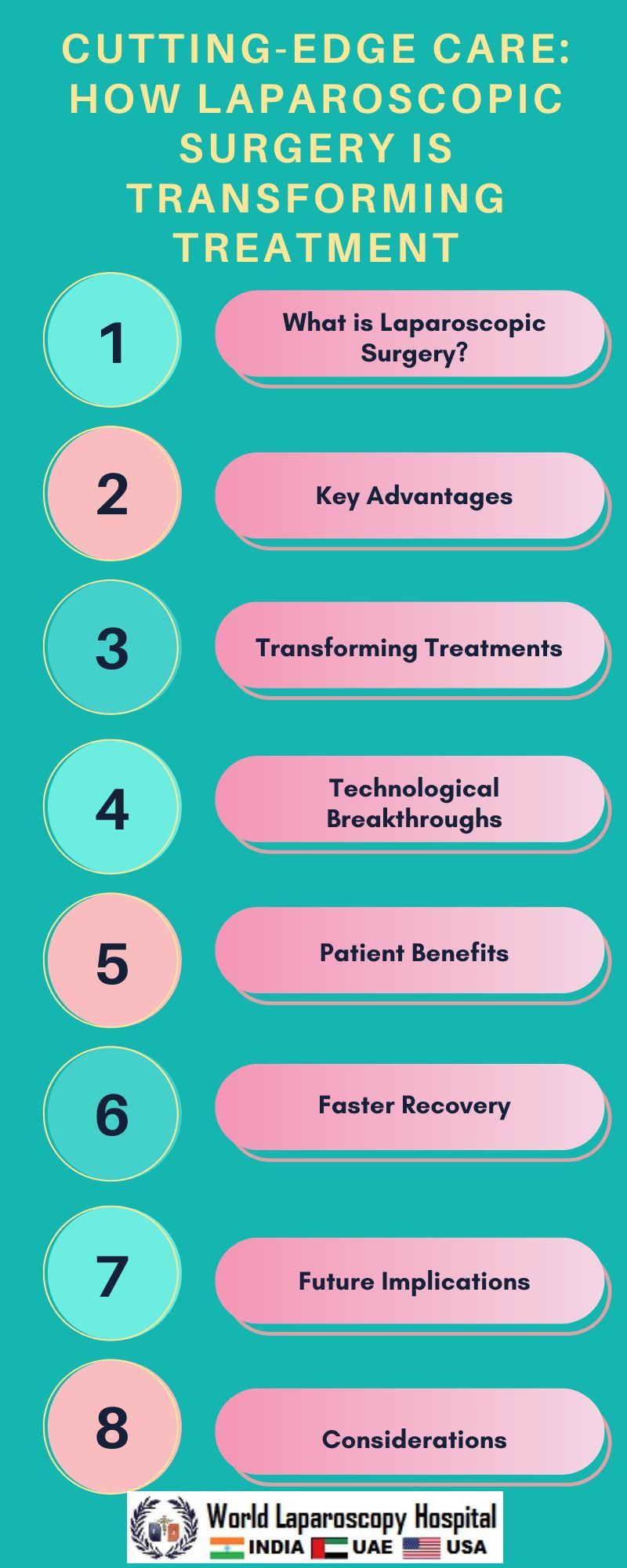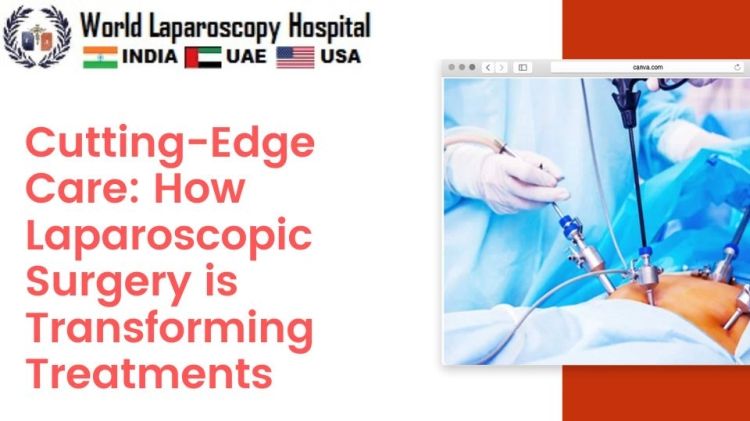Cutting-Edge Care: How Laparoscopic Surgery is Transforming Treatments
Introduction:
In the rapidly evolving landscape of medical technology, laparoscopic surgery has emerged as a revolutionary approach, transforming the way various medical conditions are treated. This cutting-edge technique, also known as minimally invasive surgery, utilizes small incisions and advanced technology to conduct procedures with increased precision and reduced patient impact. This article explores the history, technology, applications, and future prospects of laparoscopic surgery, shedding light on its profound impact on modern healthcare.

Evolution of Laparoscopic Surgery:
Historical Overview:
Laparoscopic surgery has roots dating back to the early 20th century, with pioneers like George Kelling and Hans Christian Jacobaeus experimenting with endoscopic procedures. However, it wasn't until the late 20th century that technological advancements allowed for widespread adoption of laparoscopy.
Technological Milestones:
The development of fiber optics and video technology in the 1970s and 1980s played a pivotal role in the evolution of laparoscopic surgery. These innovations facilitated the creation of miniature cameras and instruments, enabling surgeons to visualize and manipulate internal organs with unprecedented clarity.
The Mechanics of Laparoscopic Surgery:
Procedure Overview:
Laparoscopic surgery involves making small incisions through which a trocar is inserted, providing access for a camera-equipped scope and specialized instruments. Carbon dioxide is then used to inflate the abdominal cavity, creating a workspace for the surgeon. The entire procedure is visualized on high-definition monitors, allowing for meticulous control and precision.
Instruments and Equipment:
Laparoscopic instruments are designed to mimic the movements of a surgeon's hand with enhanced articulation and dexterity. Staplers, scissors, and graspers are among the tools adapted for minimally invasive procedures. The continual refinement of these instruments has significantly expanded the scope of laparoscopic surgeries.
Applications Across Medical Specialties:
General Surgery:
Laparoscopic techniques have become standard in procedures such as cholecystectomy, appendectomy, and hernia repair. The reduced trauma to surrounding tissues results in shorter hospital stays, quicker recovery times, and diminished postoperative pain for patients.
Gynecology:
Gynecological conditions, including hysterectomy and ovarian cyst removal, are increasingly being addressed through laparoscopic approaches. The minimally invasive nature of these procedures is particularly beneficial for reproductive-aged women, offering faster recovery and reduced scarring.
Urology:
Laparoscopic surgery has transformed urological interventions, including prostatectomy and nephrectomy. The precision and reduced blood loss associated with laparoscopy contribute to improved outcomes for patients with urological conditions.
Orthopedics:
Although traditionally associated with soft tissue surgeries, laparoscopic techniques are making inroads into orthopedics, with procedures such as knee and shoulder surgeries benefiting from smaller incisions and faster rehabilitation.
IV. Advantages of Laparoscopic Surgery:
Minimal Invasiveness:
The hallmark of laparoscopic surgery is its minimal invasiveness, resulting in smaller incisions, decreased blood loss, and reduced trauma to surrounding tissues. This, in turn, leads to faster recovery times and diminished postoperative pain for patients.
Improved Visualization:
The use of high-definition cameras provides surgeons with unparalleled visualization of the surgical field. This enhanced clarity allows for meticulous precision and the ability to identify and address anatomical structures with greater accuracy.
Reduced Complications:
Laparoscopic procedures are associated with a lower risk of postoperative complications, such as infections and wound-related issues. The minimization of trauma to tissues contributes to a lower incidence of adhesions and scarring.
Quicker Recovery:
Patients undergoing laparoscopic surgery typically experience shorter hospital stays and quicker recovery times compared to traditional open procedures. This not only reduces healthcare costs but also allows patients to resume their normal activities sooner.
Challenges and Limitations:
Learning Curve:
While laparoscopic surgery offers numerous advantages, mastering the techniques requires specialized training and a steep learning curve. Surgeons must adapt to a different visual perspective and refine their hand-eye coordination to navigate the limited space within the body.
Equipment Costs:
The initial investment in laparoscopic equipment can be substantial, posing challenges for healthcare institutions, particularly in resource-constrained settings. However, the long-term benefits in terms of patient outcomes and reduced healthcare costs often justify this investment.
Patient Selection:
Not all patients are suitable candidates for laparoscopic procedures, depending on factors such as the nature of the surgery, the patient's overall health, and any previous abdominal surgeries. Careful patient selection is crucial to ensuring optimal outcomes.
Future Directions and Innovations:
Robotics in Laparoscopic Surgery:
The integration of robotic systems into laparoscopic surgery is a significant advancement that enhances a surgeon's capabilities. Robotic-assisted procedures offer improved precision, enhanced dexterity, and the ability to perform complex maneuvers with greater ease.
Artificial Intelligence (AI) Integration:
The integration of artificial intelligence into laparoscopic surgery holds promise for further improving outcomes. AI algorithms can assist in image recognition, real-time decision-making, and even autonomous robotic surgery, paving the way for more efficient and personalized interventions.
Miniaturization of Instruments:
Ongoing efforts to miniaturize laparoscopic instruments aim to further reduce the invasiveness of procedures. Smaller incisions and instruments may lead to even faster recovery times and expanded applications of laparoscopic techniques.
Conclusion:
Laparoscopic surgery has undeniably transformed the landscape of modern medicine, offering patients and surgeons a host of benefits across various medical specialties. As technology continues to advance, the future of laparoscopic surgery holds exciting possibilities, with robotics, artificial intelligence, and further miniaturization poised to redefine the boundaries of what is achievable in minimally invasive procedures. The ongoing collaboration between surgeons, engineers, and researchers ensures that laparoscopic surgery will remain at the forefront of cutting-edge care, continually shaping the future of healthcare delivery.
